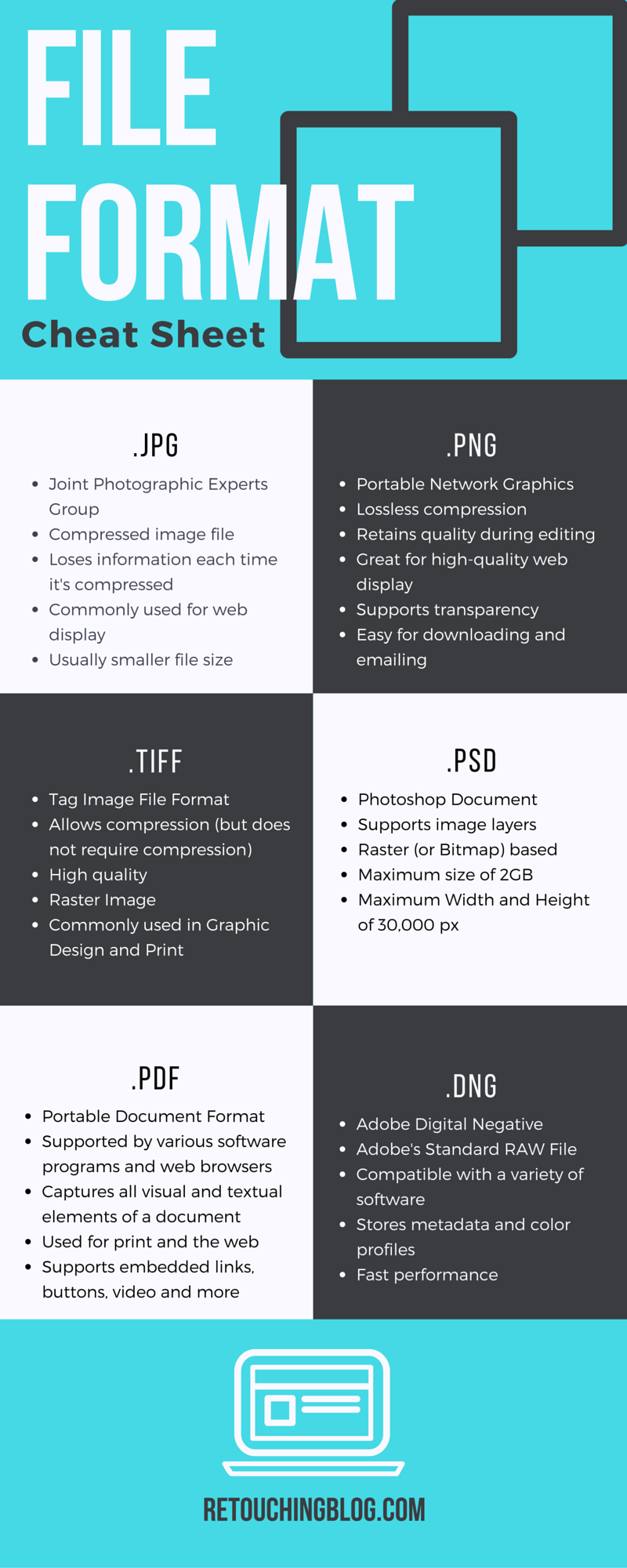Know Your File Types : A Quick Guide On Digital File Formats
.JPG - Joint Photographic Experts Group
A JPEG (JPG) is one of the most common image types you will probably encounter in the digital world. The "JPG or JPEG" are abbreviations for the file type's full name, Joint Photographic Experts Group. In relation to its name, this file format is often used for digital photography as a compression method called, lossy compression. However, this file format is not used only in photography; illustrations, digital art, and other digital imagery can be saved in JPEG format. The only downside to using JPEG is its loss of quality as compression repeated. So remember to always keep your RAW, TIFF, and PSD files to make changes to. While there are high-quality JPEG files, it's imperative that each time you make a change to JPEG file and save it, irreversible data loss takes place.
DNG - Digital Negative
DNG, standing for Digital File Negative, has become a popular file type in over the years between Adobe users. The DNG file is a RAW file type created by Adobe typically for use between Adobe Photoshop and Adobe Lightroom. It is now a RAW file type that is compatible software other than Adobe software or other software and camera manufacturers. I highly suggest converting your RAW files to DNG once you import them into Photoshop or Lightroom. The only downside about DNG files is that the conversion process can be a little time consuming.
.PDF - Portable Document Format
Probably coming second to JPEG files, PDF files are one of the most common file types used in the digital world. This file type is commonly used in print, but can also be used in digital context. It captures all the visual and textual elements of a document while compressing it to a format usable for print and interactive purposes. What's really cool about PDF files, is how much they have evolved in the past few years. Now PDFs can contain interactive links, buttons, and form functions which are great for maintaining a paperless workflow. PDF file sizes vary, but its best to keep them relatively small when you're trying to share them throughout the web. Larger PDFs tend to be necessary mainly for print.
.PNG - Portable Network Graphics
PNG, Portable Network Graphics, is a raster image type that is similar to JPEG. PNG files differ from JPEG because it's a lossless file type and can have a transparent background. Since its lossless, a PNG file can be a bit larger in file size.
.TIFF - Tag Image File Format
TIFF stands for Tag Image File Format and it is an uncompressed file format that stores raster graphics. This file format is pretty popular among creatives such as photographers, designers, and illustrators. TIFF files can also contain layers or be flattened. These are excellent file types to use when sending finalized work to clients. I normally send TIFF files flattened to reduce the file size, but what you do with your layers is dependent on your project and client agreement.
.PSD
PSD is Adobe Photoshop's primary work file format. It can contain detailed raster information; therefore, file sizes can vary from relatively small to extremely big ( like 2GB big). Normally, when the file gets too big, it will be saved as a .PSB instead of .PSD. Considering the potential file sizes of .PSD, it's not ideal to deliver .PSD files to clients. Another thing to consider, when working with .PSD file is your computer's power and storage. While it's tempting, try not to create duplicate .PSD work files unless you're preparing to move onto a backup device. This will only create clutter and slow down your computer processing.
